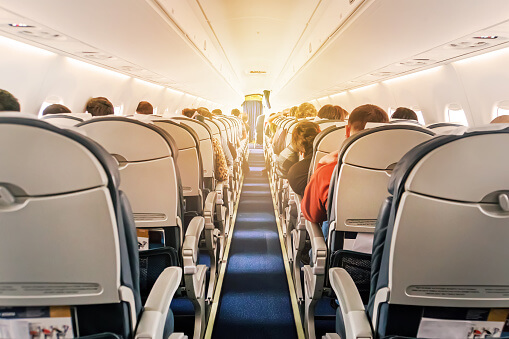Airline injuries have been in the spotlight in recent months due to an infamous incident at Chicago O’Hare Internal Airport involving a passenger being dragged from United Airlines Flight 3411 for refusing to leave his seat to make room for airline employees.
The passenger, Dr. David Dao, suffered multiple injuries in the April 9 incident, including a concussion, broken nose and two lost teeth, according to an NBC News report about the incident.
Initially, United Airlines blamed Dr. Dao for the incident, claiming that he was belligerent and “flailing and fighting” with law enforcement officers from the Chicago Department of Aviation, who were dispatched to the airline to remove Dr. Dao, according to CNN.
But as videos of the incident went viral on the internet, showing Dr. Dao being dragged from the airplane and offering no resistance, United Airlines quickly struck a different tone and apologized for the incident, according to The New York Times. Then on April 27, United Airlines agreed to an undisclosed settlement agreement with Dr. Dao for his injuries.
Focus on Airline Injuries
While the April 9 incident has been resolved, the incident has renewed concerns about airline injuries and passenger safety, even though airline fatalities as whole have continued to decline in recent years.
Last year, no one was killed in an airline crash anywhere in the world on a United States-certificated scheduled airline flight, according to Forbes magazine. In fact, this was a continuation of a remarkable seven-year trend. The last time a fatal airline accident occurred involving a U.S. airline was Feb. 12, 2009, when Colgan Air Flight 3407 crashed in Buffalo, killing all 49 people aboard, plus one person on the ground.
Recent Incidents
But injuries regularly occur on airlines and in major airports. At Chicago’s airports, recent incidents include:
- 20 people injured in airplane fire on the runway at Chicago O’Hare International Airport involving American Airlines Flight 383 on Oct. 28, 2016, according to the Chicago Tribune.
- A woman was paralyzed in August 2015 when a shelter at Chicago O’Hare International Airport broke lose due to missing bolt and crushed her, according to CBS News.
Other recent injuries involving passengers nationwide at other airports include:
- Three people injured in airplane fire on United Airlines Flight 1579 in Newark, N.J. on May 22, according to CNN.
- Two people injured in two separate incidents on Southwest Airlines flights in Houston on May 18, according to KHOU News.
Your Rights
The laws governing airline injuries can be very complicated. That’s because different laws exist depending on where the incident occurred, including whether the accident took place in an airport or occurred on a commercial airplane. Even the actual destination of the flight can affect an injured passenger’s ability to be compensated for their injuries.
Different laws exist for domestic airline injuries and international airline injuries. International flights are covered by the Montreal Convention, a law which has been in place since 1999, according to USA Today. Under the international law, airlines are liable for up to 113,100 special “drawing rights” per passenger, which works to roughly $170,000 per passenger in the United States. But such figures are misleading because injured passengers or surviving family members of people killed in international airline accidents can recover additional money, as “there is no limitation on the recovery against an airline,” USA Today noted.
As for domestic airline accidents, there is also no limit placed on the amount of money injured passengers or family members can seek from an airline, according to the Aviation Disaster Family Assistance Act of 1996 and the General Aviation Revitalization Act of 1994 (GARA), which governs domestic airline accidents.
If you or a loved one was injured in an airline accident, you or your family may be able to obtain financial compensation for your loss. To learn more about your specific rights, contact the Chicago law firm of Coplan & Crane and schedule your free case evaluation.
















